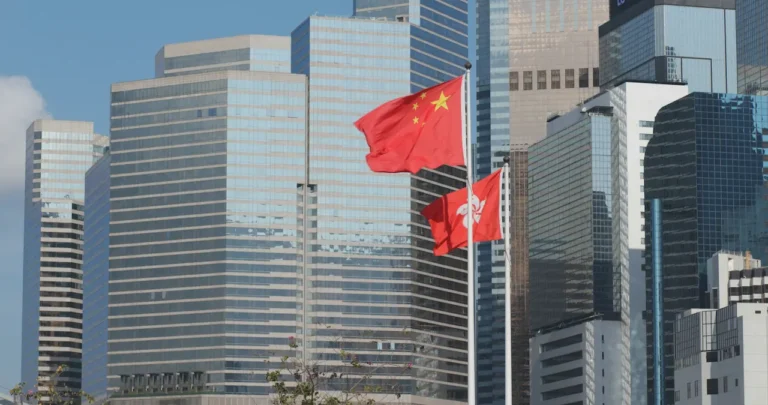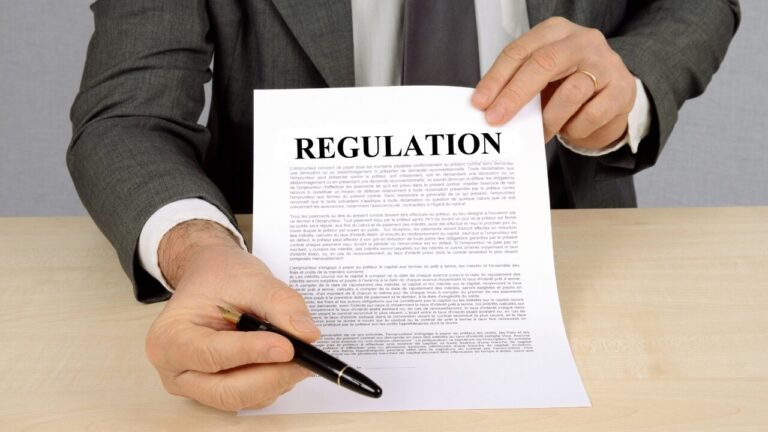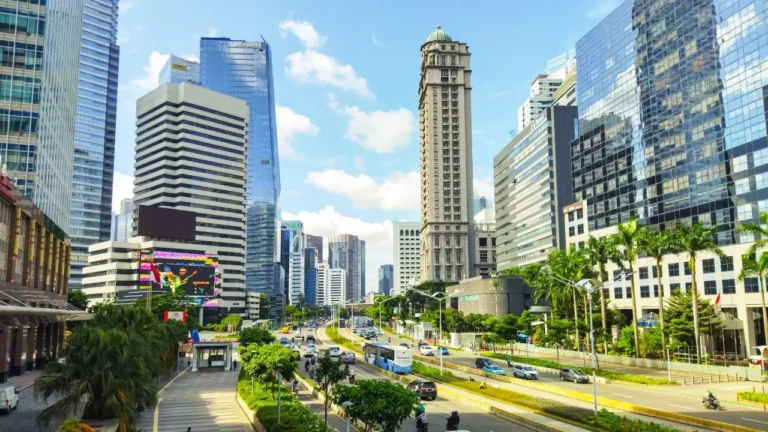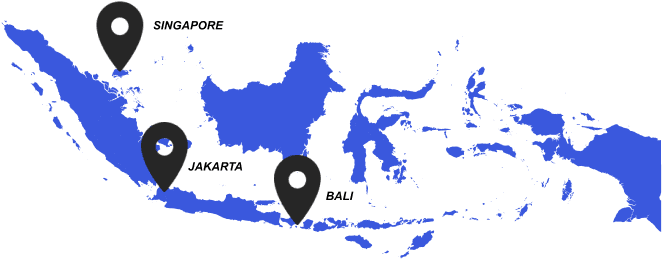Table of Contents
ToggleA holding company in Indonesia is a perfect way to manage subsidiaries, get tax benefits and optimise the management of your company or personal investments.
Particularities of the Holding Company in Indonesia
Unlike other Limited Liability Companies (PT PMA), the holding company doesn’t operate or sell products or services in Indonesia or overseas. The holding company is a mother or parent company owning assets (shares) of other companies (subsidiaries) with the purpose of controlling and supervising the investment but not making decisions on the day-to-day.
The operations and management of each entity are done at the subsidiary level. The top management of a group is usually employed at the holding level to coordinate the strategy and optimize the budget of the group (CFO, Marketing, HR, Head of Group operations, etc.).
Registering a company in Indonesia has never been easier
Setting up a business abroad can be challenging with so many documents, laws and regulations to consider. Luckily, the process will be a breeze, and we’ll give you expert advice on which business structure and setup will fit your needs.
Reach out to the ILA team today to set up a free consultation or read more about the company registration process.
What is the Purpose of a Holding Company?

The purpose of a holding company in Indonesia can be defined as:
- Harmonise and optimize the group policy
- Facilitate the repartition of the investment at the group level
- Overseeing company operations
- Rationalization of the service and product of the group
- Limit the financial risk and personal liability
- Tax optimization
Harmonise and optimize the group policy
A holding company (PT PMA in Indonesia) is interesting for investors who have several investments or subsidiaries and wish to harmonize their group policy. Indeed, once a group starts to have a few companies or activities, it might be judicious to apply and manage the policy at the holding level.
The purpose is to spread the vision of the company through the group and ensure the best practices are applied at the subsidiary level with rules and policies that are not in opposition between subsidiaries. It is not rare to see companies of the same group comparing to each other and bringing friction instead of moving forward together. This strategy involves, for example, applying the same Human Resources policy, the same financial and reporting policy, and the same risk management or Quality control.
Facilitate the repartition of the investment at the group level
The main purpose of a company is to provide a return on investment (ROI) for its investors. The advantage of a holding company is that it simplifies the investment process for investors, pools their investment into the different activities of the group, and provides one financial return.
Having the investment done through the holding company simplifies the way to invest the capital injection and reinvest the profit of some subsidiaries into other activities without having to take the profit at the individual level but by making the capital circulate through the group.
For example a company investing in real estate can take the profit of one subsidiary and reinvest its profit into another activity or project without having to withdraw the cash out of the group.
Also read: How to Create a Foundation in Indonesia
Overseeing company operations
As described above, a holding company in Indonesia is a parent company. As a mother, the holding supervises the activities of its child by ensuring the operations are in accordance with the group policy and that the ROI is maximized for the investors.
The holding company has the trust of the investors and it is its primary responsibility to supervise the investment is safe and profitable. As the mother company and main shareholder, the holding company is liable for any loss of its subsidiaries.
Rationalization of the service and product of the group
Holding companies are used around the world to also rationalize the service and product of a group. Indeed, once a group starts to grow, it might be interesting to merge some activities under one “umbrella” to achieve some economic scale.
For example a company investing in the property sector could merge all its development activities under one company and the management of the property under another company with both companies under a holding company. Some groups or conglomerates apply this technique to provide a better vision to the clients on what is the core business of each company.
Also, a company that clearly rationalizes its services is able to provide clearer reporting and identify the profit and loss of each of its activities. It helps the top management to take appropriate decisions by having a clear vision on the profitability of each product and services which also can attract confidence to investors.
Limit the financial risk and personal liability
One of the main reasons for incorporating a holding in Indonesia is to limit the financial risk and personal liability of the investors. Indeed, each PT PMA in Indonesia has a minimum liability of 10 billion IDR. Having several activities under one PT PMA can increase the liability due to the addition of the KBLI. If, for some reason, one activity is suddenly liable and responsible due to malicious activity or a client suing the company for its activity, the liability of the shareholder is exposed to the capital declared. However, if the activities are clearly separated under 2 different companies, the holding can close the company without affecting its other activities.
As an investor, it is important to limit its personal exposure and facilitate its reporting to the tax office. The benefit of a holding company is that it can remove its personal name from all subsidiaries by keeping its name at the holding level.
Tax optimization
Having a holding company helps to optimize the taxation between subsidiaries. Call ILA for a better understanding.
Types of Holding Companies in Indonesia
Indonesia has only one type of legal structure for establishing a holding company. The regulator in Indonesia classifies the holding as an entity with the purpose of controlling the assets of a group of subsidiaries.
Holding companies can invest in large types of companies such as:
- Real estate (development and sales)
- Mining (mining production and distribution)
- Media (media production and media advertising)
- Tourism (hotel and hotel management)
- Industry and manufacturing
In most of the scenarios, companies creating holdings choose this structure to separate their business into two entities. One entity to own the assets and one entity to operate the assets.
Also read: A Comprehensive Guide to Open Your Business in Bali
Indonesia Holding Company Formation Process

It is suitable here to separate two different cases that impact the formation process and the cost of establishing a holding company in Indonesia.
- Creating a holding before starting any activity
- Restructuring the activities for businesses already running
Establishing a holding company in Indonesia from scratch
Some investors prefer to establish a profitable business before considering how to optimize their business structure. However, this strategy may have tax implications and prove counterproductive. It is always beneficial to start a business journey with a well-structured foundation to avoid higher costs for fixing initial issues.
The process of structuring a holding company takes 5 days to 2 weeks. The holding company in Indonesia can have Corporations or Individuals as shareholders. As the regulator classifies holdings with foreign investors as PT PMA, this type of company requires a resident director (foreigner with a KITAS or a local person) in order to have a tax number.
- Define the most efficient structure based on the tax residency of the shareholders.
- Provide the necessary documents (Passport or ACRA)
- Choose an appropriate name
- Deed of establishment (AKTA)
- Ministry Approval (SK)
- Tax Card (NPWP)
- NIB (Business Identification Number)
Establishing a holding company and restructuring
If, for some reason, a company did not establish a holding company at the beginning of its business journey, it is important to analyze the current structure of the company in order to define the process, define the cost and analyze the impact on each shareholder. Depending on the current situation, several scenarios can be present
- Splitting and merging some activities and creating a holding on the top
- Amending the current company and creating a holding in order to acquire/ create new subsidiaries
The steps can however be seen below:
- Define the new structure
- Create the new holding company as defined in the previous chapter
- Split the current activity
- Proceed with the newspaper announcement
- Realise the acquisition
Registering a Holding Company in Indonesia
The requirements to establish a new holding company in Indonesia are as follows:
- Passport of the shareholder
- ACRA or any official documents of the company taking share in the holding
The cost to register a holding company is variable depending on the current structure and the location of the registration. We encourage you to contact us in order to define the most appropriate structure and define the different steps. Better Call ILA.























